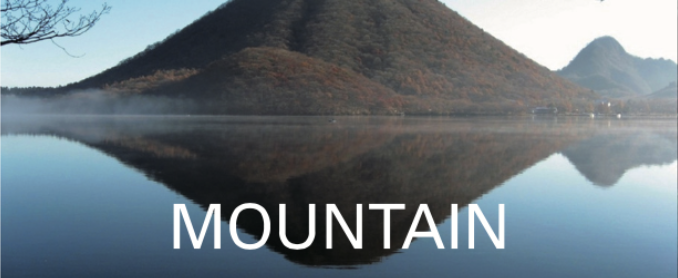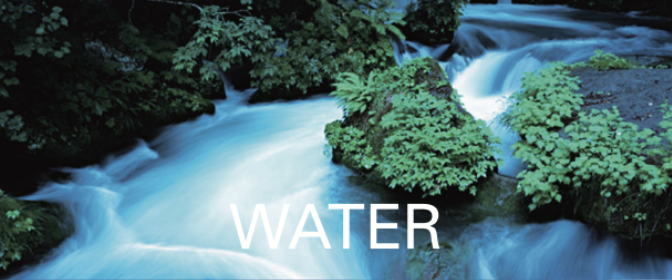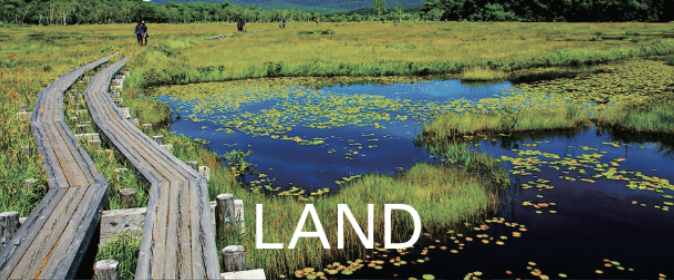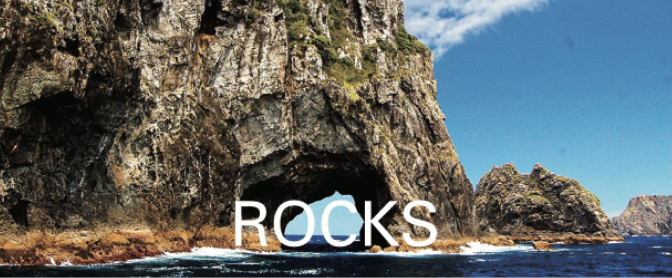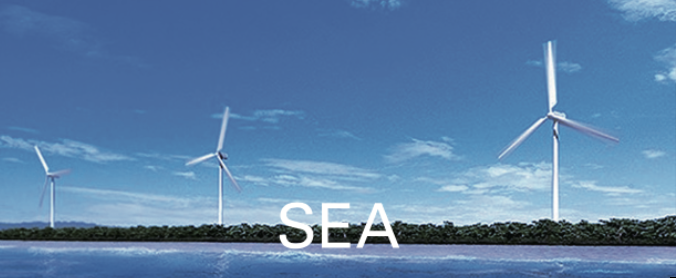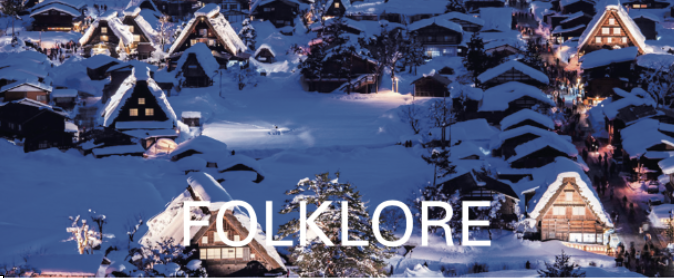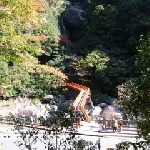
This gorge is located in the upper reaches of the Aizu River, which flows through the center of Tanabe City. There are countless numbers of strangely shaped rocks of all sizes. Above the Fudo Water Fall, Magai Sanson Dai Sekibutsu, the stone-cliff sculpture of the Three Great Buddhas images are engraved in a single rock, which was based on an original painting by Domoto Insho (1891 – 1975), a Japanese painter. The special harmony with the landscape is spectacular.
Through the harmony, you can experience the intersection of the causality of inevitability and the contact of by-chance, mentioned by Minakata Kumagusu (1867 – 1941), a Japanese author, biologist, naturalist and ethnologist. Kumagusu guided that you could know many of the natural principles at once, at this intersection.
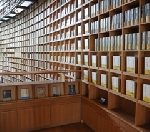
Shortly after Shiba Ryotaro (1923 – 1996) died, this museum opened (November 2001) in the author’s memory. It consists of Shiba’s house and a building designed by Ando Tadao (1941 – ), a Japanese architect from the adjacent land. You can see Shiba’s study room from the small path through the window, in the garden of a thicket, which changes from season to season. This is the memorial hall of “try to feel” and “try to think” with the large three-storied open shelves, with a height of 11 meters, that holds about 20,000 books.
– Shiba said that the prototype of Japan has been as clear and plain as spring mineral water since ancient times.
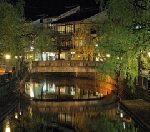
Kinosaki Onsen is in the famous hot spring area in Hyogo prefecture, which opened 1,300 years ago. The scene of the Line of Willows and the Otanigawa River with the arched bridge is typical scenery of the Onsen, where Shiga Naoya (1883 – 1971), a Japanese novelist, also liked the quiet atmosphere. There are 7 open air baths scattered in the hot spring town, and you can enjoy different hot spring baths.
– “A Dark Night’s Passing” is the novel by Shiga Naoya, which has the scene of Kinosaki Onsen. Even when you’re sailing on a dark night, you can reach the land of dawn by touching the richness of nature.
The flow continues from the huge sea of 10,000 years ago, Kinusaki no Umi fleet. – The Otanigawa River used to be Kinusaki no Umi fleet.
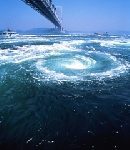
Tosa Diary, was a poetic diary by Ki no Tsurayuki (872? – 945) in the 10th century, who was a Japanese author, poet and courtier of the Heian period. Naruto Strait, Awaji Hyogo was the place where Tsurayuki prayed to the gods and Buddhas with anxiety on the trip from Tosa Province Kochi back to Kyoto, the capital, while reliving the memories of his daughter, who was lost in Tosa Province.
The whirlpools that appear on the shallow coast of Naruto Strait is the same as those thousands of years ago when the Tosa Diary was written. The whirlpools are created with the reunification of the tide to go straight from the Pacific Ocean and the tide that bypasses Awaji Island. That phenomenon overlaps Izanagi, the male deity who fathered Japan and Izanami, the female deity who mothered Japan, in the mythology of Kuni-umi (the birth of the land of Japan) and Kami-umi (the birth of the God of Japan).
They say the whirlpools are Izanagi and Izanami going round and round. Ama no Mihashira, the heavenly pillar on Onokoro Island, was built by Izanagi and Izanami to give birth to the Islands and Gods.
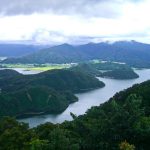
Mikata Goko Lakes, 5 lakes – Mikatako Lake, Suigetsuko Lake, Sugako Lake, Hirugako Lake, and Kugushiko Lake, are in the valleys of the low mountains, and create a mysterious tone of color. They are a scenic spot, representing Wakasa Wan Quasi-National Park, which was also described in Manyoshu, the 8th century anthology of Japanese poetry.
About 20,000 years ago, people settled in the inland lake, far from the coast, just before the Jomon period (16,000 years ago – 3,000 years ago). The ancient culture going up to the north, along the sea road, took root in the landscape that was created by repeated fault changes.
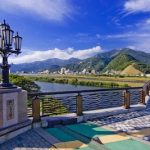
In the Shinshu Nagano basin, the water temperature is higher than the air temperature, so fog tends to occur along the river. The fog also makes the landscape mysterious. Obaste Chikuma city is a famous spot for the moon. The famous moon from Mt. Kyodaisan, on the other side of the river, and “Tagoto no Tuki: the moon reflected in several rice-fields lying in tiers on a hillside”, comforted the hearts of the people, since ancient times.
The magnificent view also became a poem by Matsuo Basho (1644 – 1694), the most famous poet of the Edo period. The night view along the Chikuma River extends to Zenkoji daira, a basin, under the stars in the sky.
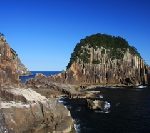
Tategasaki Sightseeing Boat Tour goes around the Kumano-nada Sea in the eastern part of the Kii Peninsula, on a one hour tour. The magnificent coastal beauty created by rough seas can only be enjoyed from the sea.
The “Taegasaki” is a large rocky wall with a height of about 80m and a circumference of about 550m, which stands like a huge shield with a large number of pillars piercing the sea.
This rock wall of Columnar Joint rock is characteristic of the coast of Kumano and has been a subject of worship since ancient times.
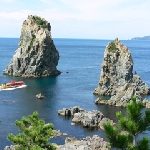
The island is located in the Kita-nagato Kaigan Quasi-national Park, which is also known as the Sea Alps. You can fully experience the magnificence of natural art, on the sightseeing boat, where you can view the cliffs eroded by rough waves, strangely shaped rocks, and the wave works.
And, when you walk along the nature research trail, looking down on the wave works below, you can definitely get the feeling of a phrase in the poem by Kaneko Misuzu (1903 – 1930), a Japanese poet and songwriter. – The phrase is “We are all different and all wonderful”.
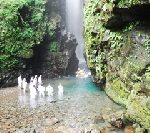
Todoroki Kujudaki Water Falls are one of the leading waterfalls in Shikoku Island and are at the upper reaches of the clear stream of the Kaifugawa River. Hontaki, the main water fall, with a drop of 58m, was selected as one of the 100 most famous waterfalls in Japan. There are various waterfalls of various sizes at the upper reaches of Hontaki, such as Nijunotaki Water Fall, Fudo Water Fall, Yokomi Water Fall, and Torikaeshi Water Fall.
In the summer and autumn, the ritual of Mikoshi, a portable shrine entering the waterhole of Hontaki, is held to worship the whole water fall as the object enshrined. It is also the origin of the mysterious Kaifu Sword that has been transmitted since ancient times.
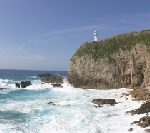
A chalky Light House on the cliff of Cape Ashizuri protrudes into the Pacific Ocean. It has been lit for safe navigation since in 1914. In the Medieval Ages, the cape was thought to be the site of the east gate leading to Mount Potalaka in the seas south of India, the mythical dwelling of Kannon: the Buddhist Goddess of Mercy, and was worshipped.
It is said that Kobo Daishi Kukai (774 – 835): the founder of the Shingon sect, founded Kongofukuji Temple in 822, when Emperor Saga (786 – 842) gave Kukai an Imperial scroll of “Fudaraku Tomon – the east gate leading to Mount Potalaka” written by the Emperor himself.
The view might overlap the tide of life and consciousness in East Asia moving northward like a dream of Kukai.
– Kukai brought Shingon Esoteric Buddhism to Japan, via an envoy ship from the Tang Dynasty (618 – 907).
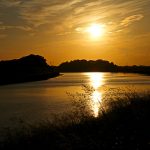
Yame is the place where the Yabe River and the Hoshino River meet, from the border of Oita Prefecture. It has been an alluvial fan, filled with natural benefits since ancient times. Today it is one of the best tea producing areas in Kyushu Island. When the clear stream Yabe River takes a sunset, the memory of the ancient time strolls all over the field of the tea plantations.
Tsukushino kimi Iwai (died 528) was a powerful family and regional administrator in Tsukushi Province, Fukuoka, who became the king who revolted against the Imperial court. -The history has been left by the winner. The evidence tells the fact.
The fact that the tomb of Tsukushino kimi Iwai has been preserved quietly tells you his legitimacy.
